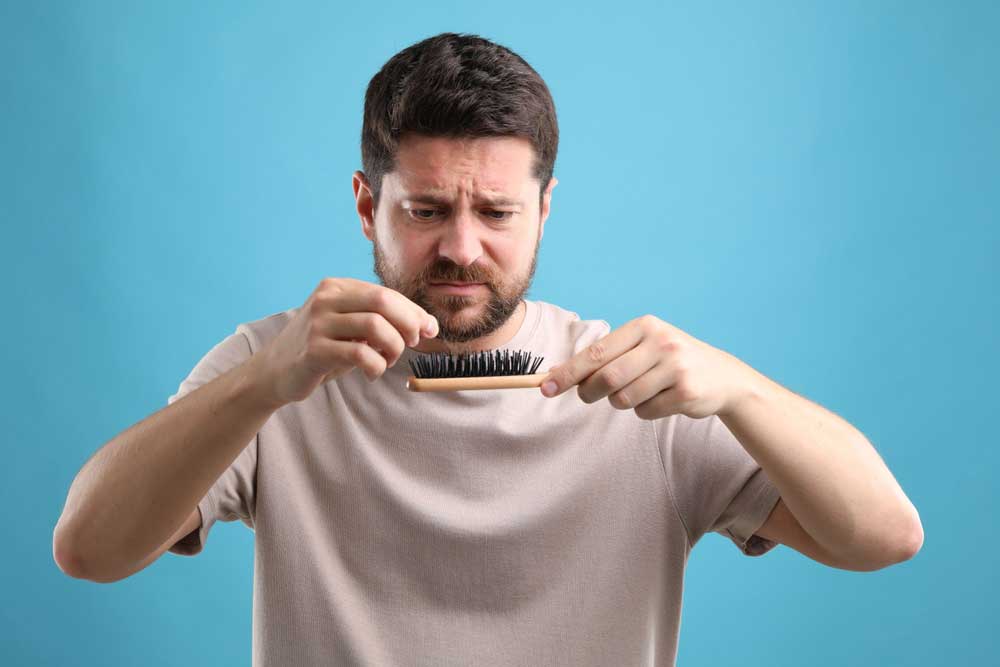1. Give Thin Hair A Boost With Silicone
Silicones are basically a group of ingredients that act as a raincoat for one’s hair or skin. Products with silicone will often lock out any humidity and leave one’s hair slick and smooth. While some conditioners can leave your hair feeling heavy and limp, products with silicone will give your hair a fuller appearance, hence why many swear by it. It is important to note that since most silicone products are not water-soluble, it can lead to some pretty annoying build-up over time. Thus, it’s probably best to find the “good” ones that are water-soluble.
2. Shower With Lukewarm Water To Protect Shine
Though hot water is great for opening up pores thus allowing for a deep clean, it can also dry out your hair and cause it to become brittle. That doesn’t necessarily mean you have to freeze in the shower however. Instead, try to shower with lukewarm water that isn’t overbearingly hot. Washing your hair in hot water has its pros and cons. But, hot water doesn’t damage the internal protein structure of your hair. A simple rule to follow is to shower and shampoo with warm water, and then use cold water to wash your hair after conditioning.
3. Use The Right Product For Dandruff
Dandruff is a skin condition that mainly affects the scalp. Symptoms include flaking and sometimes mild itchiness. It can result in social or self-esteem problems. A more severe form of the condition, which includes inflammation of the skin, is known as seborrhoeic dermatitis. While there are oil products out there that supposedly treat this skin disorder, medicated shampoos are the best way to tackle dandruff. Keep in mind, it can take about a few weeks for dandruff to disappear. So be sure to not switch shampoos too soon. It’s safe to say to try each one for at least a month to see if anything changes.
4. Brushing Can Promote Hair Loss
Brushing not only can pull and tug hair follicles, but can promote hair loss due to the repeated motions and irritation to the scalp. The normal amount of hair loss is between 50-100 hairs a day. This number may seem like a lot, but in reality it is nothing compared to the average amount of hair we have. To mitigate some damage when using a brush, it’s suggested to use a brush with ball-tipped bristles. Moreover, brushing wet hair is highly advised against. This can lead to major breakage since more-than-necessary force is used to brush through knots.
However, if you feel like every time you run your brush through your hair or are noticing a ton of hairs in your hands while shampooing, then this may serve as early signs of hair loss. Another place to look for shedding hair is on the pillow you sleep on. While we sleep, many tend to move a lot throughout the night. Thus, this causes friction between the pillow and scalp which can result in shedding.
5. Take A Break From Styling
If you’re one to aggressively blowdry your hair in the mornings or use a ton of hair products to keep your style in shape no matter what gets thrown at you today, you can bet that great hair won’t come without a cost. Heat damage can make straight hair appear dry and brittle. It can also exaggerate the appearance of split ends and make it harder for your hair to lie flat. This isn’t to say that you should never continue to style your hair. It’s just a good idea to take extra steps to keep your hair healthy despite whatever heat tools and hair products you choose to use. Your hair will thank you.
If you so choose to continue styling your hair using heat and products, there are ways to mitigate the damage you may do to your hair in the long-run. One simple way to safeguard your hair if you tend to use a blowdryer is to get yourself a good heat protectant. If the name isn’t dead giveaway to its purpose, essentially what it does is add a barrier between your styling tool and your hair, sealing in moisture and fending off frizz. They also work to smooth the cuticle, making your hair look smooth and feel soft. Instead of your hair being suddenly exposed to heat, it will gently heat up. This lowers the damage done to your hair and scalp. Keep in mind that heat protectants only reduce the amount of damage caused by heat styling. At most, they reduce the damage by 50% even with high end heat protectants.


